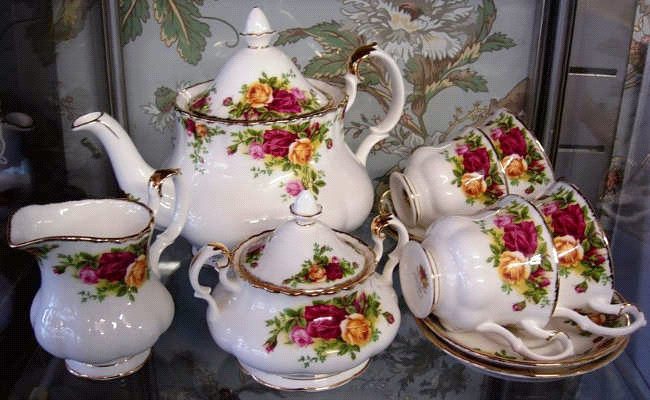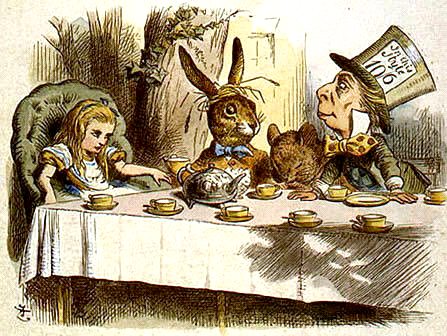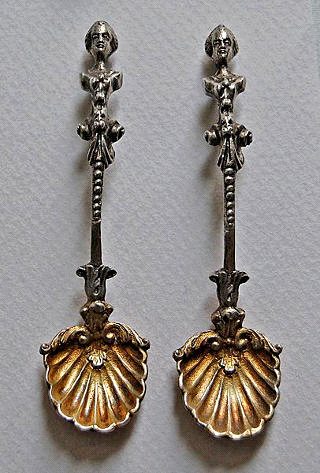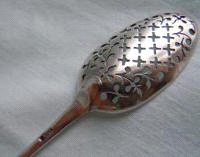Prompted by Jocelynn Cordes’ recent essay, Michael Copeland sends this paean to tea, which makes for a fitting companion.

What’s That? A Teapot.
by Michael Copeland
“What’s that?”
“A teapot.”
“What’s it for?”
“Tea.”
“Well, don’t you just put a bag in a mug?”
That was the exchange recently between a student and the uncle and aunt with whom she had come to stay. It expresses one of those inexorable changes in usage from one generation to the next, with each remaining loyal to what it knows. Tea is such an everyday item that we barely give it a thought, but its story is a fascinating and rich one of enterprise, inventiveness, fashion and change.

It is a little hard to imagine now, but at one time, around the 1690s, tea was very, very expensive. Shipped under canvas all the way from China, it had its Chinese name, Tchai, or Tcha, that gave rise to the English “cup o’ char”. The expression “not for all the tea in China” denoted an unimaginably huge sum of money. Its customers, in the richer stratum of society, liked it, and were prepared to pay. It was, in two senses, a matter of good taste. Desirable, partly because of being delicious and refreshing, and partly because it was costly and associated with persons of elevated rank, it gave rise to a considerable industry, beginning in the tea houses and coffee houses, such as Lloyd’s, where merchants and magnates met in a club-like setting.

A delicious drink that is expensive provides a motivating occasion for a ladies’ social gathering at home. Polite company could be invited to join in this refreshment, over which much important talking, chatting, and plotting could take place. Of course, the best houses had proper Chinese teapots, and approved China ware cups — little bowls with no handles — all fashionably brought over from China. In case the staff might allow any of the costly leaves to ‘go missing’, m’Lady remained in charge of them herself: they were kept locked up. Enterprising suppliers of fashionable accessories designed elegant lockable tea caddies for drawing room use, befitting m’Lady’s degree, to enhance the occasion. The keeping of the precious leaves ever under the hostess’s watchful eye resulted in a need for the boiling water to be provided in the drawing room itself. Silversmiths obliged Georgian society by producing fine ornamental kettles on stands with spirit-flame heater below. The kettle, the tea and the teapot were the hostess’s domain. Watching the performance and anticipating its agreeable result were part of the shared enjoyment of this event.

The ritual of tea-making inevitably became a vehicle for show, impressing the company with its fine trappings. British potters joined the act. Earthenware being insufficiently fine, they earnestly strove to copy the fine Chinese porcelain, and made their own teapots, jugs and bowls modelled on the Chinese. They competed with each other to make beautifully decorated tea sets, now much valued as antiques. Josiah Spode in the 1790s successfully produced his bone china, the word ‘china’, by this time, being used to refer to porcelain. Tea certainly tastes well from a bone china cup. Customers, they found, came to prefer cups with handles, so they provided them, and larger than the tiny China bowls, so they provided those, too.
 The tea itself contained certain extra plant matter amongst its leaves, which floated on the surface in the cup. This was strained off with a special shallow-bowled pierced ‘mote skimmer’. Enterprising silversmiths offered handsome silver skimmers with pretty patterns of piercing. At first the traditional Chinese porcelain spoon, on its own tray, would be handed round to be used for stirring. This was found to be rather cumbersome, so the teaspoon was created, around the 1790s, so that each drinker could have an individual stirrer. Once more the silversmith’s art came into its own with a choice of pretty designs. The teaspoon has ever since held its own as a useful innovation, and is now a standard item. Strainers, also produced in variety, enabled the hostess to prevent leaves from entering the cup; with their special bowls to rest on they joined the essentials on the tray, gradually displacing the mote skimmers.
The tea itself contained certain extra plant matter amongst its leaves, which floated on the surface in the cup. This was strained off with a special shallow-bowled pierced ‘mote skimmer’. Enterprising silversmiths offered handsome silver skimmers with pretty patterns of piercing. At first the traditional Chinese porcelain spoon, on its own tray, would be handed round to be used for stirring. This was found to be rather cumbersome, so the teaspoon was created, around the 1790s, so that each drinker could have an individual stirrer. Once more the silversmith’s art came into its own with a choice of pretty designs. The teaspoon has ever since held its own as a useful innovation, and is now a standard item. Strainers, also produced in variety, enabled the hostess to prevent leaves from entering the cup; with their special bowls to rest on they joined the essentials on the tray, gradually displacing the mote skimmers.
Strong demand, combined with the high price tea could obtain, motivated business people to start growing it. The hillsides of the Himalayan foothills were found very suitable, so plantations were made there, providing a new source of employment. Further plantations of tea, and of coffee, were made in colonies such as Kenya, where the hill climate is suitable. Names such as Twining, Lipton, Lyons and Tetley became household names, and considerable fortunes were made. Transporting the tea as rapidly as possible to keep shipping costs down stimulated refinements in the design of sailing ships, the fast efficient tea clippers.

Many sailors were employed carrying the valued cargo sealed in its tea chests. The tea, when landed, had its own special secure warehouses, with blending rooms, re-packaging facilities, and so on, all providing further employment, with particular importance attaching to the taster, deciding the blend.
To enable growers to know with confidence what their return would be the financial markets were, and are, utilised to provide forward purchasing — tea futures. This has the benefit of smoothing fluctuations in price caused by weather, war, and other risks. From Lloyd’s coffee house developed the marine insurance providers of that name, a critical element in a maritime supply route that had plenty of ruinous dangers.
Inevitably politicians cast a predatory eye on the tea habit. Expensive items tend to be made targets for taxation, on the grounds that their customers are the ones who can afford to pay. Sure enough, a tax was imposed. This tax was one of the components of dissatisfaction in the North American colonies. The inhabitants were expected to pay the tax although they had no representation in Parliament. Under their slogan “No Taxation Without Representation” they resisted. One night daring dissidents, dressed as Red Indians, boarded ships in Boston and emptied the costly contents of the tea-chests into the harbour, an achievement wittily dubbed the Boston Tea Party. This act of defiance was a pivotal event in the breakaway movement that led to the American Revolution, which created the United States.
Increased supply in turn brought lower prices: the special drink became affordable by many more. They took to it eagerly and with gusto. Tea shops sprang up. A Sheffield metals expert developed Britannia Metal, a pewter alloy base which could be silver-plated, and which enabled expensive-looking teapots to be more affordable. Ever more varieties of earthenware and porcelain teawares were marketed by home producers, and so on, and so on; a large book could be written. As the price of tea came down the lockable tea caddy was rendered redundant, and joined the ranks of bygones, as later did the kettle, replaced by the hot water jug. Old habits died hard, but the younger generation opted for life without them. Practical inventions, such as the little metal basket on a fine chain for containing the leaves, helped to make tea-brewing easier to manage. The tea industry has also provided, all along, much employment to retailers, to advertisers and packaging companies, and their designers.
 The demise of domestic staff made further inroads on the traditional paraphernalia of tea-serving. The invention of the electric kettle and, later, the initially humble tea bag facilitated the provision of tea-for-one on demand, which, in turn, reduced the need for the teapot. The subsequently mighty tea bag engendered a special little saucer to receive it. The electric kettle has a whole story of its own, a sequence of successive design sophistications. An early improvement was the kettle thoughtfully designed to eject its plug when boiled dry after being forgotten. Then — whoever would have thought of that? — there was the kettle that switches itself off when it boils. There followed the plastic kettle, the flex-free one removable from its base, the swivelling model, the same with a window, with the heating element incorporated inside its floor, with a light, and so on. Increment by increment the process of tea-making has been made simpler, faster, and more convenient. Most people now operate it on autopilot, without giving much thought to how it has arrived at its current state, and they are too busy to want to re-enact the old rituals, enjoyable though they were. That neatly brings us back to where we started — the teapot. The familiar old teapot is now becoming associated with the older generation; the younger singles, at any rate, managing without, routinely putting their bag in a mug.
The demise of domestic staff made further inroads on the traditional paraphernalia of tea-serving. The invention of the electric kettle and, later, the initially humble tea bag facilitated the provision of tea-for-one on demand, which, in turn, reduced the need for the teapot. The subsequently mighty tea bag engendered a special little saucer to receive it. The electric kettle has a whole story of its own, a sequence of successive design sophistications. An early improvement was the kettle thoughtfully designed to eject its plug when boiled dry after being forgotten. Then — whoever would have thought of that? — there was the kettle that switches itself off when it boils. There followed the plastic kettle, the flex-free one removable from its base, the swivelling model, the same with a window, with the heating element incorporated inside its floor, with a light, and so on. Increment by increment the process of tea-making has been made simpler, faster, and more convenient. Most people now operate it on autopilot, without giving much thought to how it has arrived at its current state, and they are too busy to want to re-enact the old rituals, enjoyable though they were. That neatly brings us back to where we started — the teapot. The familiar old teapot is now becoming associated with the older generation; the younger singles, at any rate, managing without, routinely putting their bag in a mug.

Every component of this history of increased supply, inventiveness, and adaptation has been individual private enterprise: there is no Soviet Five Year Plan anywhere. All the planning, management decisions, innovations, financing and insurance, have been by private enterprise. A considerable industry, delivering a wanted product efficiently, is the result. The simple mechanism of being able to reap a reward for having an idea, working at it, and risking money to put it into effect has been what drove all these changes. These responses to consumer need and demand simply do not happen in a collective system, which is inherently sluggish and inflexible, held back by the Union of Mote Skimmer Piercers insisting on their rights.
Not long ago there were left-wing demonstrations and encampments outside St. Paul’s Cathedral, and ‘Occupy’ demonstrations in New York, proclaiming “Smash Capitalism”. The demonstrators, when tired and cold, went over the road to buy cups of restorative hot coffee and tea from the nearest chain coffee shop. George Igler, founder of Discourse, rightly pointed out that these ardent anti-capitalists were relying on and patronising a veritable epitome of capitalism. Every cup is an encapsulation of centuries of capitalist private enterprise, of risk-taking and inventiveness, a product of insurance, banking, futures markets, transport systems and so on. Every sip by anti-capitalists is thoughtless brazen hypocrisy, a crass failure to register the vital capitalist nature of what they are taking for granted. Thus do they expose their inadequate, uncomprehending and infantilised view of economics. It is a valid indictment.
So, teapot or no teapot, next time you have a cup of tea, even if it is prepared entirely on autopilot, spare a thought, as you enjoy your drink, for all that risk-taking capitalist enterprise you may not have known it embodies. We can all be grateful for how well it works, and for what a good job it does.
For previous essays by Michael Copeland, see the Michael Copeland Archives.

Thank you for this work!
I raise my cup of Irish Breakfast tea to you!
And to capitalism.
Socialist tea would only be available to the party elite, and used as a status symbol. It would be viewed as a great luxury… and be similar to Lipton’s.
Capitalist tea is cheap enough that we might well toss the bag after a single cup.
By the 19th century tea was cheap enough for servants to have a tea ration including in their contracts, and here in Australia, “meat, flour, sugar, and tea” were the official rations provided to tramps (better known as “swagmen”, or even “sundowners” because they arrived at farms at sundown, when it was too late to set then to work).
But in the 18th century, it was so expensive that it was locked away from the servants, and it was subject to a luxury tax, just like brandy. Most of the rent-a-crowd who took part in the Boston Tea Party would not have been able to afford it, even without the tax.
you forgot the Tea Coasy
Thank you for this wonderful article!
This is the correct link to the site with the history of the electric kettle:
https://beeco.co.uk/oldelectrickettle/
I have changed from years of drinking Assam, Darjeeling and Ceylon tea to Chinese Gunpowder green tea. For me it’s a more enjoyable drink, which surprises me, even though I have milk in it. But no sugar, which I stopped using over 50 years ago.
I once watched a video of the making of a pencil, from raw materials to the end product. That too epitomises the remarkable achievements of free markets without government destructive interference.
Quite unlike the socialists interference in every aspect of business activities, these days. I think eventually it will all end in tears. And then the re-building will have to begin.
In the essay referred to above just under the title, I discussed the piece “I, Pencil” at some length. I believe it was Milton Friedman who made a video of Leonard Read’s essay.
Wow. That was absolutely marvelous. Really. I especially loved the sentence,
“Every cup is an encapsulation of centuries of capitalist private enterprise, of risk-taking and inventiveness, a product of insurance, banking, futures markets, transport systems and so on.”
You really captured the complexity involved in making a staple, and though the manufacturing of tea has been simplified, it wouldn’t exist were it not for that entire labyrinthian process–a process that has by no means been eradicated. It’s simply behind the scenes and taken for granted.
My favorite is Chai Tea Latte.
Thanks, Ned, for posting this beautiful story.
Thank you, commenters. I raise my cup to you.
A wonderful and informative article. I sent it on to a friend and recommended your site, Baron, at the same time.
And a “Happy 4th of July” to all American patriots from a Canadian friend.
Well done and interesting article. I finally purchased a proper porcelain teapot (and tea set) from Fortnum & Mason (whose beginnings in 1707 is also a story of capitalism of the most humble item: Fortnum I believe was a servant to Queen Anne when the palace was I think was in Whitehall (Buckingham having not built yet until 1820-30s) and he was in charge of setting the candles in the many candlelabrae and chandeliers . normally they would be disposed when they burned down too far but he took them and sold them on the side to the public). The set is a Commemorative set for King Charles III Coronation. I opted to get both tea bag sets and loose tea tins. The tea strainer is nice too. The design a n the pot, cups, saucers and sandwich tray is of festoons of green oak leaves on white background. Very delicate ceramic craftsmanship. I presented an ailing friend his own cup and he was very appreciative.
I was watching YouTuber London tour guide Joolz in one episode explain that coffee houses as you had mentioned became bigger and more powerful things. White’s coffee (and chocolate?) house became the White’s Club, the unofficial Tory clubhouse, especially after fire burned down the old Westminster palace.
I wish we had a tea-time break in the afternoons …but will settle for Saturday or Sundays. Whether it is formal with correct ritual or casual and impromptu, it does promote friendship and fellowships. And you don’t get filled up before dinner with minimal calorie cumber-horseradish sandwiches like you do with cool ranch Doritos!
The Dutch really went to town with trying their hand at making Chinese porcelain , especially around Delft, and so see whole walls tiled in blue and white shimmering in candlelight with tulip pagodas on oak mantles is quite splendid.